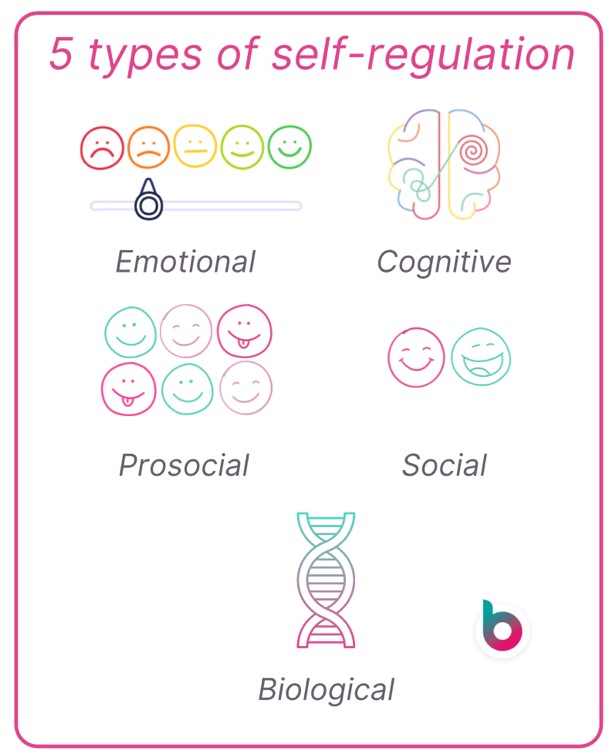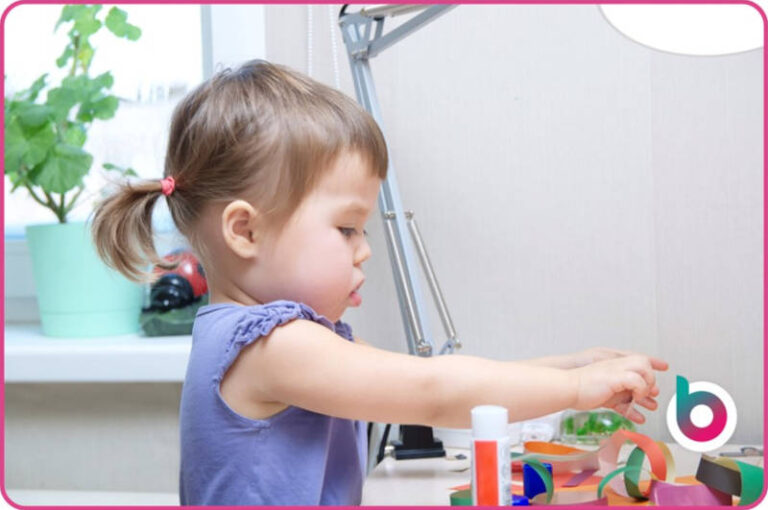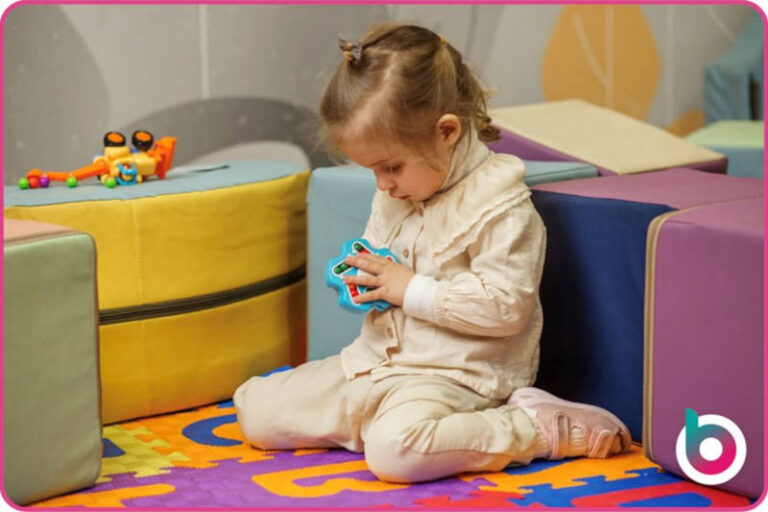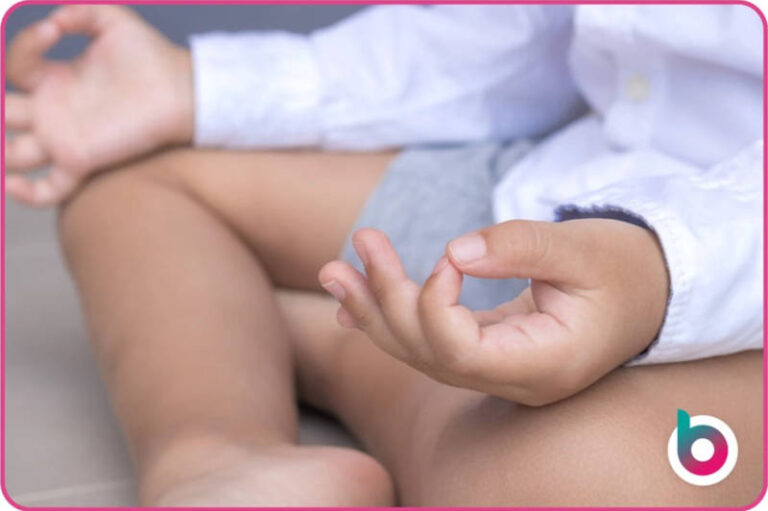The nurseries that have the best self-regulation provision know something others don’t. They know the science behind how self-regulation skills are built.
All early years practitioners and leaders know self-regulation is a hot topic for Ofsted inspections. However, few settings understand how these skills are built in early childhood or use brain development stages to help them plan effective PSED provision.
In this article, we’ll make it simple.
We explain the science behind self-regulation in early years, how it links to toddler brain development, and give easy-to-implement strategies to improve your PSED provision.
What is self-regulation in early years?
Self-regulation is a lifelong skill many adults have yet to master. Your nursery team must know that self-regulation in EYFS is the starting point.
Your practitioners will be working to plant the seeds of good self-regulatory skills that children will build upon throughout their lives. The use of solid self-regulation strategies will help provide your nursery children with the environment needed to confidently develop their skills.
Self-regulation is one of those concepts that everybody can have a slightly different definition of. At Blossom, we like to make things simple for nursery managers. We weren’t happy with the current definitions of self-regulation out there. They’re wordy and hard to wrap your head around – here’s the definition of self-regulation your practitioners need to know:
Self-regulation is when a child uses strategies to respond to a change. The change can be internal (a change in feelings or physiological changes like tiredness and hunger) or external (a change in routine, the environment or the actions of another).
The types of self-regulation
There are 5 main types (or domains) of self-regulation:
- Emotional
- Responding to and managing internal emotional changes. Like emotions of fear, joy and loss
- Cognitive
- Control and adjustment of thoughts, beliefs and actions in response to change. This can be when a task changes and needs flexibility of approach

- Prosocial
- Responding to change in a group dynamic or emotions linked to others. Prosocial is the opposite of antisocial, so regulation that promotes prosocial behaviours like turn-taking
- Social
- Managing and supporting emotional change in others. This can be when a child helps another to regulate
- Biological
- Adjustments to own internal dynamics in response to change. Like blood sugar regulation and body temperature)
Each domain of self-regulation has its own complexities. Development in each type of regulation relies on positive and repeated experiences. This is why self-regulation in the early years is the starting point of a long journey.
Consider all of the opportunities for ‘change’ in each domain. Jot down a list of the main changes your nursery children will experience during their time with you. Then, consider how your nursery team supports them through the changes.
What is executive functioning in EYFS?
We can’t talk about self-regulation without mentioning executive functioning (EF) – that’s because they go hand-in-hand.

Self-regulation is the ability to respond to changes using strategies children have in their toolkits. Whereas executive functioning describes some of the tools our brain uses to manage information, make decisions and plan ahead.
Without EF skills, attention, logical decision-making and flexibility of decisions are impacted.
One thing to be aware of is that EF skills are in the prefrontal cortex of our brain – this is the part that takes the longest to develop fully. It is thought that the prefrontal cortex is only fully developed when we are in our mid-20s.
This means that logical decision-making, the ability to manage emotions, and thinking flexibly are often beyond a toddler’s brain development stage. Or even a teenager’s!
Ensure your practitioners know the science behind a toddler’s self-regulating capacity. When completing EYFS observations, the type of self-regulation and how they responded to change can be noted.
Executive functioning is split into 3 main skills:
- Working memory, where information can be kept on pause and not ‘lost’.
- Like rejoining a game after a water break or remembering different parts of information needed to tackle a multi-step maths problem.
- Like rejoining a game after a water break or remembering different parts of information needed to tackle a multi-step maths problem.
- Inhibitory control manages impulses and thoughts.
- This can include ignoring distractions, prioritising tasks, and even stopping counting when all of the objects have been counted.
- This can include ignoring distractions, prioritising tasks, and even stopping counting when all of the objects have been counted.
- Cognitive flexibility describes the ability to switch or change gears.
- A good example is knowing we have inside and outside voices and when they apply, or altering plans to achieve the goal. Let’s say children are making a mud pie but can’t find a wooden spoon – they can alter the plan to use a stick instead.
Your EYFS curriculum should be planned to include activities to develop executive functioning skills.
The science behind self-regulation in early years
Children in their early years develop at a rapid rate. However, they have ‘limited capacity’ to self-regulate, due to the section of their brain that manages and makes decisions being a ‘work in progress’.

If we use the film Inside Out to explain (for those who haven’t watched it, we’d recommend it!), all the emotions in a young girl’s head control her responses to her daily life through a control panel. Most relevantly, the girl can only use one emotion at a time until she matures.
Effective self-regulation relies on solid executive functioning skills. It occurs when the control panel can be objective about sending each emotion’s response.
Self-regulation and executive functioning can be impacted for several reasons:
- Age and development stage of the brain
- Neurodiversity and cognitive development
- The experience of trauma
- Physiological needs not being met (rest, hunger, thirst, comfort, temperature)
To provide an inclusive approach to teaching self-regulation, your nursery must implement whole-setting strategies and routines to make children feel safe and secure.
How to teach children to self-regulate
Self-regulation doesn’t mean the child manages their response changes alone. It is the awareness of being dysregulated and identifying what will help them to regulate. As the children in your care are under five, they will need significant modelling and help in all areas of self-regulation.
The easiest way to teach children to self-regulate is to show them how to regulate through co-regulation. This is where you can model naming emotions and spotting the clues that they are becoming dysregulated and help the children build their bank of regulation strategies.

We’ll look at a few examples of common changes nursery practitioners will help children manage:
- A change of rules
- This can be perceived rules, the rules of a game or complex social ‘unwritten’ rules
- This can be perceived rules, the rules of a game or complex social ‘unwritten’ rules
- The change of routine
- From changes to the nursery timetable or the transition to another nursery room, children thrive on routine and can become dysregulated when it changes
- From changes to the nursery timetable or the transition to another nursery room, children thrive on routine and can become dysregulated when it changes
- The change of expectations
- If a plan changes, a game is stopped without warning, or they experience a different outcome than they hoped or expected- like wet playtime when they were expecting to play outside
- If a plan changes, a game is stopped without warning, or they experience a different outcome than they hoped or expected- like wet playtime when they were expecting to play outside
- A change in self
- This can be a change in feelings, physiological changes like tiredness and hunger, and also perceived changes which can be linked to anxious thinking
- This can be a change in feelings, physiological changes like tiredness and hunger, and also perceived changes which can be linked to anxious thinking
- The change in distraction levels
- Noise or activity around them can mean children have to work harder to regulate their attention levels when completing a task
- Noise or activity around them can mean children have to work harder to regulate their attention levels when completing a task
- The task difficulty or direction changing
- A concept often missed when it comes to self-regulation. When a task changes in difficulty or direction, children must use their EF skills to adjust and adapt to the changes
Top Tip: During your next staff meeting, discuss these 6 common triggers for dysregulation with your nursery team. By making a list of experiences children will need support to regulate, you will increase your team’s knowledge and confidence in helping children to regulate.
Your nursery’s next steps
We’ve covered the science behind self-regulation and executive functioning, there is so much more to learn about helping children to regulate.
- Consider the types of regulation and the opportunities for change your children experience in each domain
- Discuss with your team the common change triggers for dysregulation and agree on how to co-regulate effectively
- Evaluate your practitioner’s observation knowledge when they are assessing self-regulation skills
- Share information about self-regulation and executive functioning with your nursery parents, managing ‘challenging behaviours’ at home will be something every parent will appreciate guidance with
- Evaluate your EYFS curriculum, specifically your PSED provision, by looking at the opportunities for self-regulation strategies and how you develop executive functioning skills.
Want to get useful information to improve your nursery provision straight to your inbox? Subscribe to our Blossom Blog, it’s free!